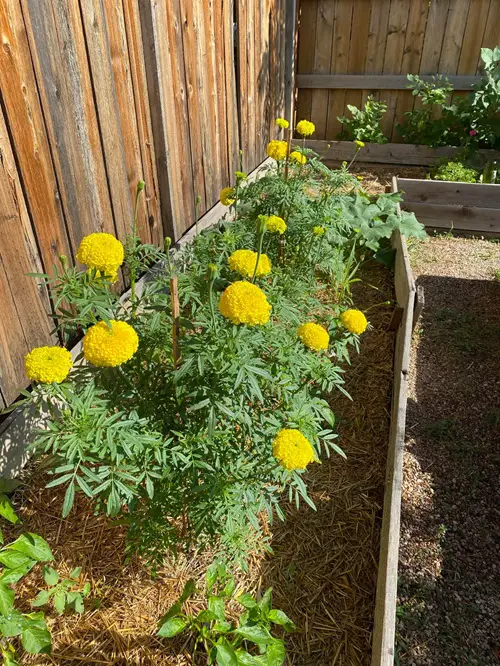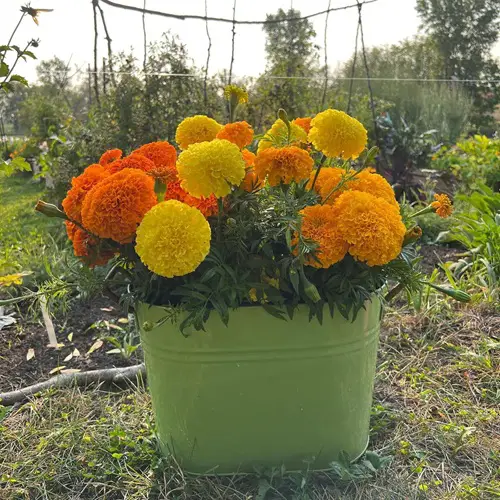Learn how to grow big, giant Marigolds with some amazing tips that are not only out-of-the-box but also easy to execute!
Marigolds are loved for their warm, cheerful colors and feathery foliage. But if you want yours to really stand out with larger blooms and fuller growth, follow these effective tips and grow a big, giant marigold!
How to Grow a Big Giant Marigold
1. Start with the Right Variety
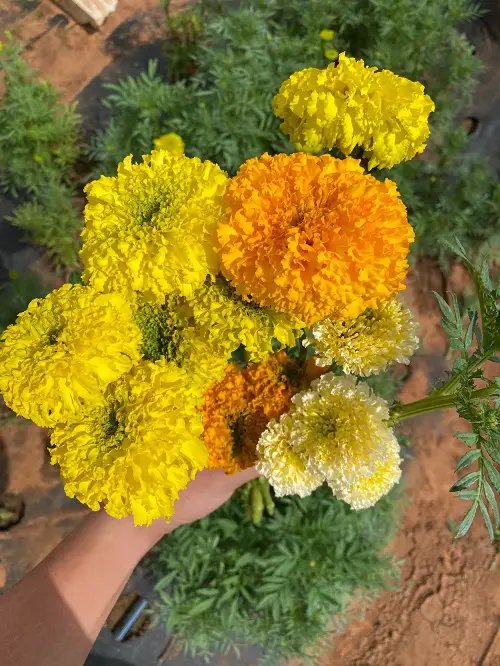
This has to be your first step towards growing a big Marigold because if you grow a variety known for small-sized flowers, no trick will work.
You can choose varieties like African Marigolds (Tagetes erecta), which are an excellent choice as they naturally grow taller and produce bigger flowers than French or Signet types. You can also grow varieties like Crackerjack and Jubilee Marigolds.
Pro Tip: Always check the seed packet for “giant” or “large bloom” varieties. Local nurseries can guide you to the best regional picks, too.
2. Deadhead Regularly to Redirect Growth
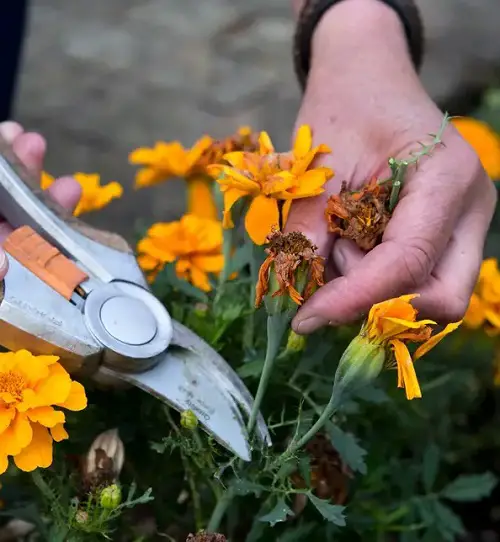
Deadheading simply means removing spent flowers. It keeps the plant from putting energy into producing seeds and instead channels it toward new, larger blooms.
All you have to do is use sharp, clean scissors or pruners, and snip just above the nearest set of healthy leaves. Deadhead weekly for best results. Don’t let dried blooms stay too long; they signal the plant to slow down flowering.
If you’re short on time, focus on removing just the largest faded blooms first, as they take up the most plant energy.
3. Pinch Young Plants to Encourage Branching

Once your marigolds are about 6 inches tall or around 40 days post-transplant, gently pinch off the top 1 inch of the growing tip. It encourages the plant to branch out and become bushier, leading to more buds and, ultimately, larger and more giant flowers.
Use your fingers or sterilized scissors to pinch. Do it once when they’re young, and a second time 2–3 weeks later for denser growth. If you’re planting multiple marigolds, stagger your pinching schedule to keep blooms coming over a longer period.
4. Use the Right Fertilizer for Bigger Blooms
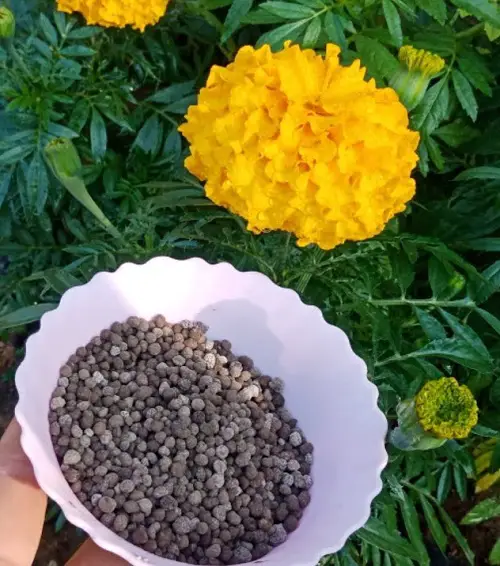
Marigolds aren’t heavy feeders, but the right nutrients at the right time can make a huge difference. Choose a balanced fertilizer with an N-P-K ratio like 10-10-10 or one slightly higher in phosphorus (the middle number), like 5-10-5, to encourage bloom size. Apply it once every 4–6 weeks, diluted to half its strength.
Avoid fertilizers high in nitrogen (like 20-10-10), or you’ll end up with lots of green leaves and fewer flowers. You should know that liquid fertilizers are easier for plants to absorb quickly, especially during the bloom cycle. You could also try these bloom-boosting fertilizers!
5. Mulch for Moisture and Soil Health
Mulching will help by providing many benefits to garden soil and promoting healthy flower growth. Applying a layer of organic mulch, such as straw, oak leaves, or shredded bark, around the base of the plants helps retain soil moisture, suppress weeds, and regulate soil temperature. These things are ideal for creating an environment perfect for thriving marigolds.
Fun Fact: In hot climates, mulch reduces watering needs by up to 30%, saving time and effort while protecting roots.
6. Choose Smart Companion Plants

Marigolds grow well alongside many vegetables. When planted next to crops like tomatoes, peppers, or beans, they help deter pests like nematodes and aphids. Fewer pests mean healthier marigold plants that can focus their energy on flowering.
Companion planting also improves soil biodiversity, which can lead to richer, more balanced nutrient availability. Just keep enough spacing between marigolds and their companions (8–10 inches) to avoid crowding.
7. Ensure Plenty of Sunlight
Marigolds thrive in bright, direct sunlight. For the biggest and most frequent blooms, ensure they get at least 6 to 8 hours of full sun daily. Without enough light, plants can become tall, weak, and underperform in flowering.
If you’re growing them in pots, rotate the containers every few days so all sides of the plant get even sun.
Pro Tip: Plant marigolds in south or west-facing spots for maximum sunlight exposure.
8. Water Consistently But Don’t Overdo It

These plants are fairly drought-tolerant, but consistent watering helps produce fuller plants with bigger blooms. Uneven watering (too much, then too little) can stress the plant and reduce flower size. So keep the soil evenly moist, especially during the flowering phase.
Water deeply 1–2 times a week rather than shallow watering every day. Also, let the top inch of the soil dry out between watering spells.
With these simple yet effective steps, you can grow big, giant marigolds easily. So what are you waiting for? Time to put these to use!





